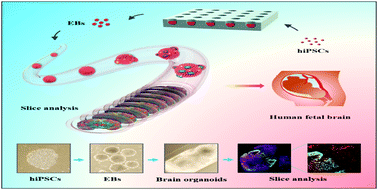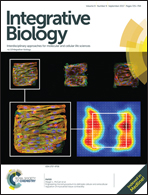A hollow fiber system for simple generation of human brain organoids†
Abstract
3D organoids exhibit near-physiological morphogenesis and histology relying on the self-organization of human pluripotent stem cells (hPSCs), representing a new class of in vitro model for studying developmental biology and diseases. An engineered approach is highly desirable to generate sufficient organoids in a simple and efficient manner. Herein, we present a new strategy for the simple formation of massive human brain organoids from hiPSCs within a hollow fiber reactor system by combining fiber materials with the developmental biology principle. A thin and finely adjustable calcium alginate (CaA) core–shell fiber was constructed using a multilayer coaxial laminar flow microfluidic system. The meter-long hollow fibers enabled neural differentiation of hiPSCs and simple formation of abundant brain organoids in a 3D matrix. The generated brain organoids displayed essential features of human brain organogenesis, including polarized neuroepithelium, cell type heterogeneity and discrete brain regions, resembling the early brain development. This approach is simple and easy to operate, which allows for simplified formation of massive brain organoids, overcoming the tedious procedures in conventional methods. In particular, the facile and scalable characteristics of hollow fibers are compatible with real-time observation and monitoring, as well as flexible tissue manipulations for downstream biological analysis. It might also provide a new platform to advance stem cell-derived organoid models and their utility in biomedical applications.



 Please wait while we load your content...
Please wait while we load your content...